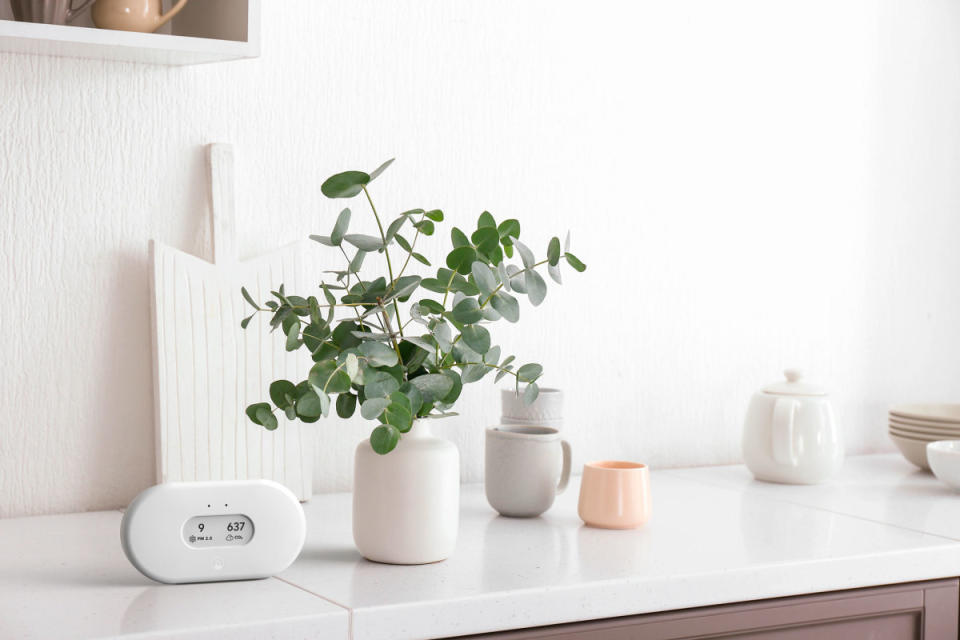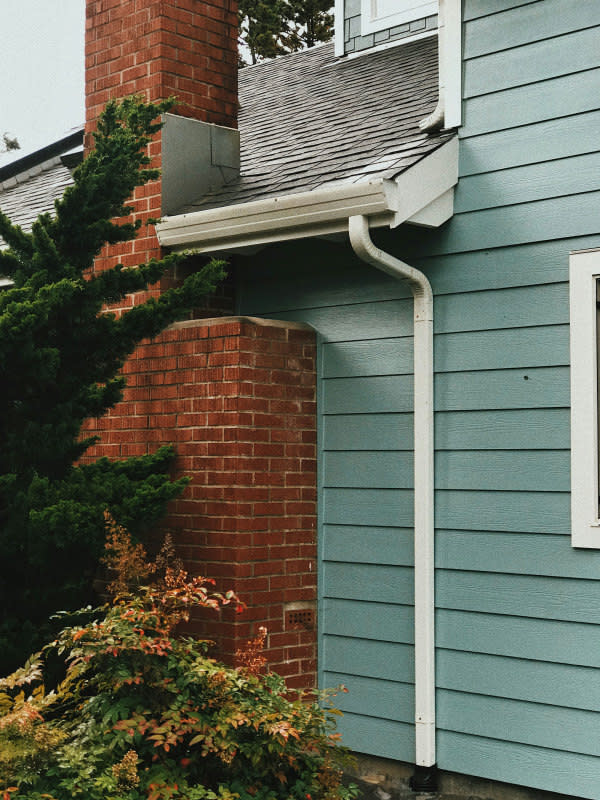How to Manage Your Home's Humidity Levels
Managing your home's humidity levels isn't just about comfort; it's about safeguarding your health and protecting your property. Whether you're combating viruses or preserving hardwood floors, monitoring the humidity levels of your homes important.
Whether you associate humidity with illnesses or not, it's important to note that it’s easier for viruses to stay airborne longer when the indoor relative humidity is low. Data from the Asthma and Allergy Foundation of America shows that the problem is compounded by the fact that our biological defenses (specifically, those mucous membranes) are at their strongest when relative humidity is between 30-60%.
On top of that, humidity can be downright damaging. High humidity can cause hardwood floors to swell and warp. This leads to unsightly buckling and gaps. Conversely, low humidity can cause wood to shrink and crack. The ideal humidity level for hardwood floors is between 30-60%.
Taking care of your home and your health is easier than you think, but it does require extra consideration and monitoring. Take steps to improve your space with these simple steps:

Airthings
Step 1. Measure and Monitor Humidity Levels- Start by understanding your home's natural humidity levels. Ideally, indoor humidity should fall between 30% and 60%. Levels above or below this range can lead to problems like mold growth or dry, cracked wooden surfaces.
- Regularly monitor humidity levels in different areas of your home, especially those prone to moisture buildup such as bathrooms, basements, and kitchens. This allows you to identify areas that may require additional humidity control measures.
- Invest in a reliable hygrometer to measure indoor humidity accurately. Many smart home air purification systems and indoor air monitors also include a humidity measurement available via app.
- Proper ventilation can help you control humidity levels. Ensure your home is well-ventilated by using exhaust fans in kitchens and bathrooms to expel excess moisture.
- Consider installing a whole-house ventilation system to circulate fresh air throughout your home, reducing humidity and improving air quality.
- During mild weather, open windows and doors to allow natural airflow, but be mindful of outdoor humidity levels. Close windows and doors during periods of high humidity to prevent moist outdoor air from affecting your home.
- Check for and seal any air leaks in your home, especially around windows, doors, and vents. Leaky seals allow humid outdoor air to infiltrate your home, raising indoor humidity levels.
- Proper insulation also helps maintain consistent temperatures, preventing condensation and indoor moisture buildup inside your walls. Inspect your home's insulation regularly and replace or repair any damaged or deteriorated insulation to ensure optimal performance. Pay particular attention to areas such as attics, crawl spaces, and basements where insulation is critical for maintaining a proper humidity levels.
- Bonus: Proper insulation can make your home an overall more comfortable environment and save you a lot of money in heating and cooling costs.
![<p>Moss Air</p>Step 4. Humidifiers for Dry Environments<ul><li>In dry climates or during cold weather when indoor air tends to be dry, consider using humidifiers to add extra moisture to the air. This helps prevent issues like dry skin, respiratory problems, and damage to wooden furniture and flooring.</li><li>Choose a humidifier appropriate for the size of your space. Consider features such as adjustable settings and automatic shut-off for convenience and energy efficiency. One new product we really liked is<a href="https://shop.mosslab.com/products/mossair" rel="nofollow noopener" target="_blank" data-ylk="slk:Moss Air;elm:context_link;itc:0;sec:content-canvas" class="link "> Moss Air</a>, a home air purifier/humidifier that uses real living indoor plants (moss, specifically) to lower indoor CO2, remove toxins, and manage dust and allergies while boosting humidity in a space. Plus, it's small and portable, so you can use it wirelessly throughout your home to improve humidity with water vapor when you need it most.</li><li>Remember: Regularly clean and maintain your humidifier to prevent creating a breeding ground for mold, and to ensure optimal performance.</li></ul>Step 5. Use Dehumidifiers for Humid Environments<ul><li>In humid climates or during moist seasons, a dehumidifier can be a lifesaver during bouts of excessive humidity. These appliances extract excess humidity from the air, helping to maintain optimal moisture levels indoors and reduce musty odors. Place dehumidifiers in areas prone to high humidity, such as basements, crawl spaces, or laundry rooms.</li><li>Choose a dehumidifier with the appropriate capacity for the size of the space you need to treat. Consider features such as automatic shut-off and adjustable humidity settings for convenience and energy efficiency.</li></ul><p>“Whole home dehumidifiers are the most efficient and fastest way to remove excess moisture from your home given their continuous operation and high-capacity removal rates," shares <a href="https://www.linkedin.com/in/jennie-bergman-9a6b4921" rel="nofollow noopener" target="_blank" data-ylk="slk:Jennie Bergman;elm:context_link;itc:0;sec:content-canvas" class="link ">Jennie Bergman</a>, Senior Product Manager of Indoor Environmental Air Quality at <a href="https://www.trane.com/residential/en/products/indoor-air-quality/humidity-control/whole-home-dehumidifiers/" rel="nofollow noopener" target="_blank" data-ylk="slk:Trane Residential;elm:context_link;itc:0;sec:content-canvas" class="link ">Trane Residential</a>. "[Trane's] <a href="https://www.trane.com/residential/en/products/indoor-air-quality/humidity-control/whole-home-dehumidifiers/" rel="nofollow noopener" target="_blank" data-ylk="slk:dehumidifiers;elm:context_link;itc:0;sec:content-canvas" class="link ">dehumidifiers</a> come with an added benefit of being able to draw in fresh outdoor air into the home, helping to improve indoor air quality. Whole home dehumidifiers are more expensive than portable units and require a professional contractor to assist with the install, but they avoid the tedious task of continuously dumping buckets of water and the nuisance of that loud fan and compressor noise in the living space.”</p>](https://s.yimg.com/ny/api/res/1.2/nK60geNEDWk3RdOKcOKhpQ--/YXBwaWQ9aGlnaGxhbmRlcjt3PTk2MDtoPTE0Mzg-/https://media.zenfs.com/en/men_s_journal_718/9bf79d9698edb74c504234365e196d18)
Moss Air
Step 4. Humidifiers for Dry Environments- In dry climates or during cold weather when indoor air tends to be dry, consider using humidifiers to add extra moisture to the air. This helps prevent issues like dry skin, respiratory problems, and damage to wooden furniture and flooring.
- Choose a humidifier appropriate for the size of your space. Consider features such as adjustable settings and automatic shut-off for convenience and energy efficiency. One new product we really liked is Moss Air, a home air purifier/humidifier that uses real living indoor plants (moss, specifically) to lower indoor CO2, remove toxins, and manage dust and allergies while boosting humidity in a space. Plus, it's small and portable, so you can use it wirelessly throughout your home to improve humidity with water vapor when you need it most.
- Remember: Regularly clean and maintain your humidifier to prevent creating a breeding ground for mold, and to ensure optimal performance.
- In humid climates or during moist seasons, a dehumidifier can be a lifesaver during bouts of excessive humidity. These appliances extract excess humidity from the air, helping to maintain optimal moisture levels indoors and reduce musty odors. Place dehumidifiers in areas prone to high humidity, such as basements, crawl spaces, or laundry rooms.
- Choose a dehumidifier with the appropriate capacity for the size of the space you need to treat. Consider features such as automatic shut-off and adjustable humidity settings for convenience and energy efficiency.
“Whole home dehumidifiers are the most efficient and fastest way to remove excess moisture from your home given their continuous operation and high-capacity removal rates," shares Jennie Bergman, Senior Product Manager of Indoor Environmental Air Quality at Trane Residential. "[Trane's] dehumidifiers come with an added benefit of being able to draw in fresh outdoor air into the home, helping to improve indoor air quality. Whole home dehumidifiers are more expensive than portable units and require a professional contractor to assist with the install, but they avoid the tedious task of continuously dumping buckets of water and the nuisance of that loud fan and compressor noise in the living space.”
Related: Quilt Launches its Long-Awaited HVAC System for Smart Home Enthusiasts
Related: How to Clean Your Dehumidifier

Photo by Zachary Keimig on Unsplash
Step 6. Control Moisture Sources- Identify and address sources of excessive moisture in your home. Fix leaks promptly, whether from plumbing fixtures, roofs, or windows, to prevent water infiltration.
- Use waterproof materials in moisture-prone areas like bathrooms and kitchens, and regularly check for signs of water damage or mold growth.
- Ensure proper ventilation in moisture-generating areas such as bathrooms and kitchens by using exhaust fans, avoiding too-hot showers, or opening windows when cooking or showering.
- Wipe down surfaces prone to moisture buildup regularly to prevent a buildup of mold and mildew growth.
- Your heating, ventilation, and air conditioning (HVAC) system plays a significant role in managing indoor humidity issues. Also, a well-functioning HVAC system helps control proper humidity levels while also improving indoor air quality. Keep your HVAC system well-maintained by replacing filters regularly and scheduling annual inspections.
- In addition to routine maintenance, consider upgrading to a programmable thermostat or a smart HVAC system that allows you to monitor and adjust levels of humidity remotely. This gives you greater control over indoor humidity levels and helps your home become more energy efficient.
- Keep an eye on outdoor weather conditions, as they can impact indoor humidity levels. During periods of high humidity, such as on rainy days or during exceptionally warm weather, take extra precautions to minimize moisture intrusion into your home.
- Close windows and doors during humid weather and consider using air conditioning or dehumidifiers to maintain comfortable indoor conditions.
- During dry weather, such as winter months or in arid climates, consider using humidifiers to add moisture to the air indoors. This helps prevent issues like dry skin, respiratory problems, and damage to wooden furniture and flooring caused by excessively dry air.

